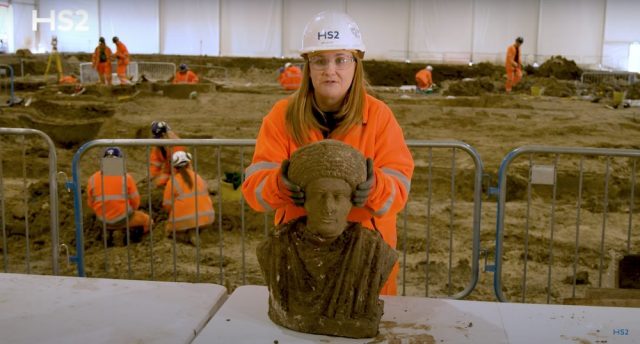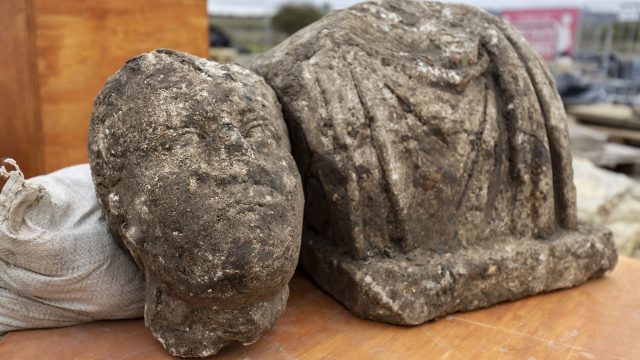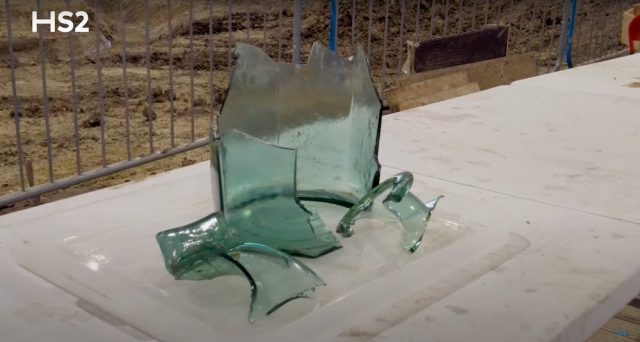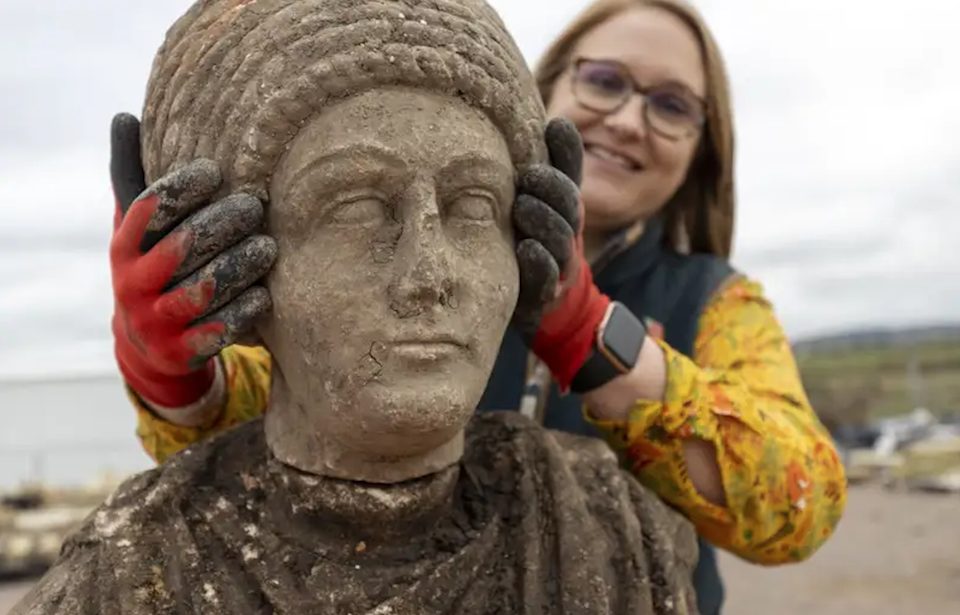Archaeologists conducting an excavation along the proposed route for the new HS2 high-speed railway have uncovered what they’re calling a “one in a lifetime” find: three stone busts dating back to ancient Rome, making them at least 2,000 years old.

The busts were discovered under the site of a former Norman church, St. Mary’s, which was built in what is now Stoke Mandeville, Buckinghamshire, in 1080. It was renovated in the 13th, 14th, and 17th centuries before being demolished in 1966 for being unsafe. Its ruins had since become overgrown with vegetation.
The busts are of two adults – a man and a woman whose heads were split from their bodies – and the lone head of a child. A hexagonal glass Roman jug was also found with large pieces still intact, despite it having been buried for more than 1,000 years. Other Roman-era finds at the site include painted wall plaster, large roof tiles, and cremation urns.
Over the past three years, more than 1,000 archaeologists have worked at the more than 60 sites along the new HS2 route between London and the West Midlands. The busts were discovered during the final stage of the dig in Stoke Mandeville, when the team was digging a ditch around what they believed to be an Anglo-Saxon tower.
“These statues are exceptionally well preserved, and you really get an impression of the people they depict – literally looking into the faces of the past is a unique experience,” said Rachel Wood, lead archaeologist for HS2’s Enabling Works Contractor, Fusion JV. “Of course, it leads us to wonder what else might be buried beneath England’s medieval village churches.
“This has truly been a once in a lifetime site and we are all looking forward to hearing what more the specialists can tell us about these incredible statues and the history of the site before the construction of the Norman church,” she continued.
Archaeologists and engineers began removing the ruins of the church in May 2021. The land also doubled as a burial ground, with around 3,000 bodies having to be dug up and reburied at a new site.

Based on what has been uncovered at the site thus far, the team has surmised it was a natural mound built up with soil. It possibly dates back to the Bronze Age, a determination made by the discovery of a Roman-era square building believed to have been a mausoleum. This is based on the nature of the items found within it.
Following the ancient Romans, it’s theorized the site was repurposed by the Saxons – indicated by the discovery of Saxon pottery and a Saxon coin – before being demolished by the Normans for the construction of St. Mary’s church.

More from us: Sword Dating Back to the Crusades Discovered At the Bottom of the Mediterranean Sea
Presently, the final destination for the three Roman busts is undetermined. For the time being, they will be shipped to a specialist laboratory where they will be cleaned up and examined.
